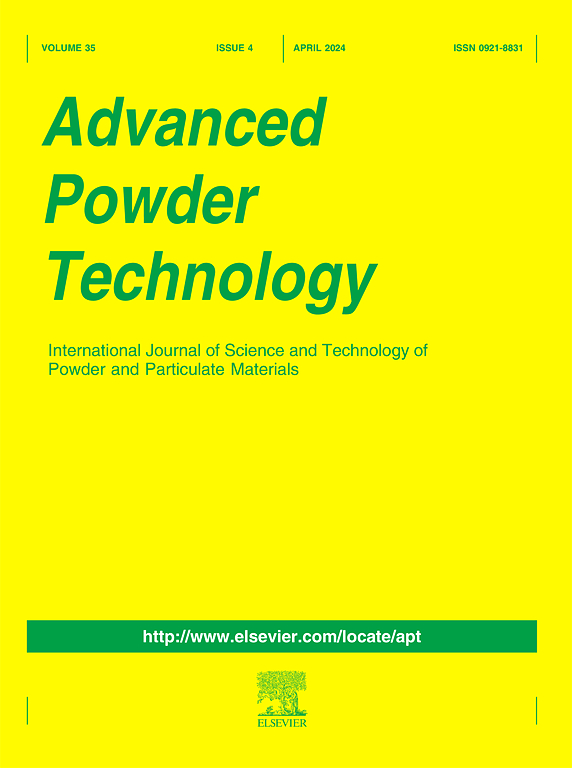Design of a wet iron ore feeder and analysis of cyclone global collection efficiency
IF 4.2
2区 工程技术
Q2 ENGINEERING, CHEMICAL
引用次数: 0
Abstract
A rod-type solids feeder was developed for handling sticky solids such as wet iron ore. The physical properties of the ore were determined, including the loose and tapped bulk densities, as well as the Hausner ratio. Feeder development followed a prototyping methodology, with performance analyzed using a dry solids mass balance. The approach quantified the ore masses accumulated in different regions of the equipment: air duct, feeder compartments, cyclone walls, and underflow. The mass escaping in the overflow was estimated and the global solids collection efficiency was determined. The tests used ore with moisture levels of 0.02, 0.06, and 0.10 kgwater·kgwet solid−1, air temperatures of 80 and 90 °C, and air velocities from 10 to 30 m·s−1. A minimum air velocity of 25 m·s−1 prevented solids accumulation in the air duct, while adhesion to the cyclone wall was minimal (≤0.21 ± 0.06 %). The results demonstrated the effectiveness of the prototyping methodology, with determination of the real global collection efficiency of the cyclone highlighting the rod-type feeder as a promising solution for use with sticky solids.

湿式铁矿给料机设计及旋风整体收集效率分析
开发了一种棒状固体给料机,用于处理粘性固体,如湿铁矿。确定了矿石的物理性质,包括松散和松散的堆积密度,以及豪斯纳比。喂料器的开发遵循原型方法,使用干固体质量平衡分析性能。该方法量化了堆积在设备不同区域的矿石质量:风管、给料室、旋风墙和底流。估算了溢流中的质量逸出量,确定了总体固相收集效率。试验使用的矿石含水量为0.02、0.06和0.10千克水·千克固体- 1,空气温度为80和90°C,风速为10至30 m·s - 1。最小风速为25 m·s−1,可防止固体在风道中积聚,同时与旋风分离器壁面的粘附最小(≤0.21±0.06%)。结果证明了原型方法的有效性,并确定了旋风的实际全球收集效率,突出了棒式给料器作为粘性固体的有前途的解决方案。
本文章由计算机程序翻译,如有差异,请以英文原文为准。
求助全文
约1分钟内获得全文
求助全文
来源期刊

Advanced Powder Technology
工程技术-工程:化工
CiteScore
9.50
自引率
7.70%
发文量
424
审稿时长
55 days
期刊介绍:
The aim of Advanced Powder Technology is to meet the demand for an international journal that integrates all aspects of science and technology research on powder and particulate materials. The journal fulfills this purpose by publishing original research papers, rapid communications, reviews, and translated articles by prominent researchers worldwide.
The editorial work of Advanced Powder Technology, which was founded as the International Journal of the Society of Powder Technology, Japan, is now shared by distinguished board members, who operate in a unique framework designed to respond to the increasing global demand for articles on not only powder and particles, but also on various materials produced from them.
Advanced Powder Technology covers various areas, but a discussion of powder and particles is required in articles. Topics include: Production of powder and particulate materials in gases and liquids(nanoparticles, fine ceramics, pharmaceuticals, novel functional materials, etc.); Aerosol and colloidal processing; Powder and particle characterization; Dynamics and phenomena; Calculation and simulation (CFD, DEM, Monte Carlo method, population balance, etc.); Measurement and control of powder processes; Particle modification; Comminution; Powder handling and operations (storage, transport, granulation, separation, fluidization, etc.)
 求助内容:
求助内容: 应助结果提醒方式:
应助结果提醒方式:


